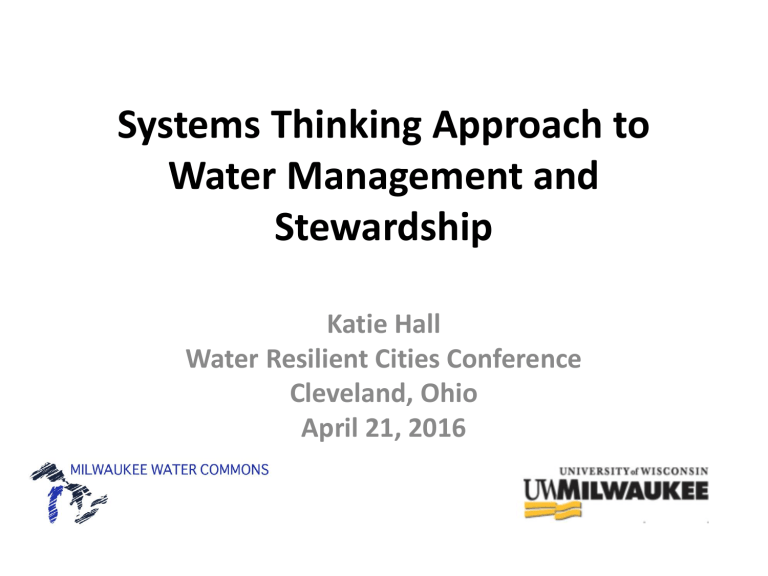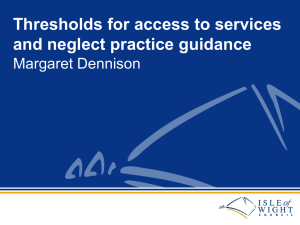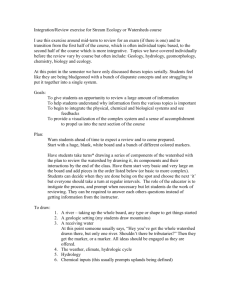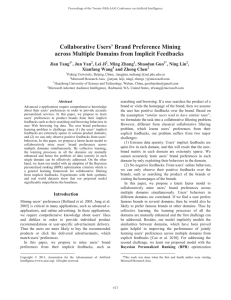Systems Thinking Approach to Water Management and Stewardship Katie Hall

Systems Thinking Approach to
Water Management and
Stewardship
Katie Hall
Water Resilient Cities Conference
Cleveland, Ohio
April 21, 2016
Outline
• Why systems thinking?
• What is a social-ecological system (SES)?
– Domains
– Thresholds
– Feedbacks
• How can it be applied to foster resilience and adaptation?
– Two step process
– Examples in practice
Why systems thinking?
• Cannot manage water in simple stocks and flows
• Domains are linked
• Thresholds are intertwined and can produce a cascading effects
Schematic of traditional water management system in a city .
What is a SES?
• A system is an interconnected set of elements that is coherently organized in a way that achieves something (Meadows, 2008)
• A social-ecological system describes a complex environment that contains multiple domains, thresholds and feedbacks (Walker and Salt, 2012)
– Domain: Sphere of knowledge or activity
– Threshold: Limitation in the system
– Feedback: Relationship between elements
There is more to water than management.
Treatment and distribution of potable water to homes, schools, businesses and other facilities.
Consumption and use of water.
Extraction from Lake
Michigan for drinking and sanitation.
Treatment of water and discharge into
Lake Michigan.
Movement of wastewater through sewer system to water treatment facility.
Water needs to be understood in terms of both social and ecological elements.
Conservation
Equity
Stewardship
Public Health
Community Resilience
Celebration
How can systems thinking foster resilience or adaptation?
Two step process:
1. Gather Knowledge: Understand feedbacks and thresholds
2. Design Interventions: Use understanding to strategically intervene in the system
Step One: Gather Knowledge
• Build networks – Know who, what, and where!
• Share expertise and experience
• Collaborate beyond the
“usual suspects”
Adapted from Michael Quinn Patton, 2011.
Step Two: Design Intervention
• Identify key feedbacks and cascading thresholds
• Design interventions that foster the intended response in the system
Step One: Knowledge Generation
Water City 3.0
Milwaukee Water Commons
• City scale
• Multi-sector collaboration
• Two-year initiatives and ten-year vision
Step One: Knowledge Generation
Water Story Map
Great Lakes Commons
• Regional scale
• Transdisciplinary knowledge generation
• Real-time updates
Step Two: Design Interventions
Water School
Milwaukee Water Commons
• Engagement with adults and children
• Often first time seeing
Lake Michigan
Step Two: Design Interventions
In Progress…
• Every child learns to swim – Modeled after
New York
• Great Lakes Water Walk
• Youth Water Innovation Center
• Water Festival – Expansion of “We Are Water”
Conclusions
• Consider all ways of knowing water – Not just scientific knowledge
• Create spaces for collaboration – locally and regionally







